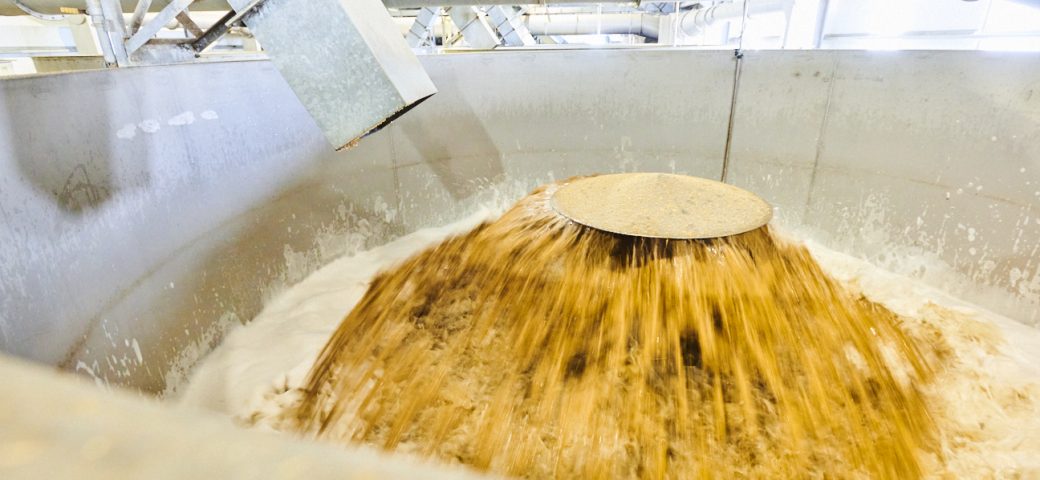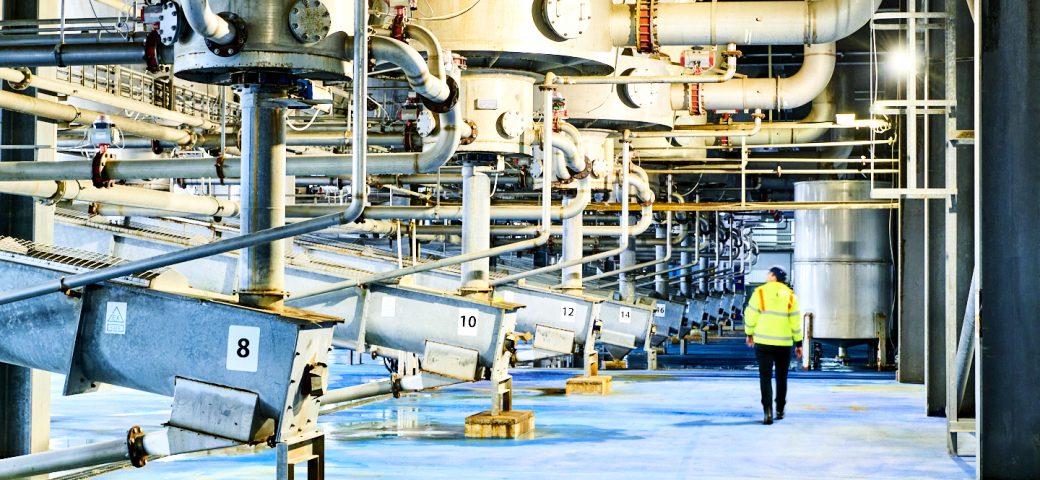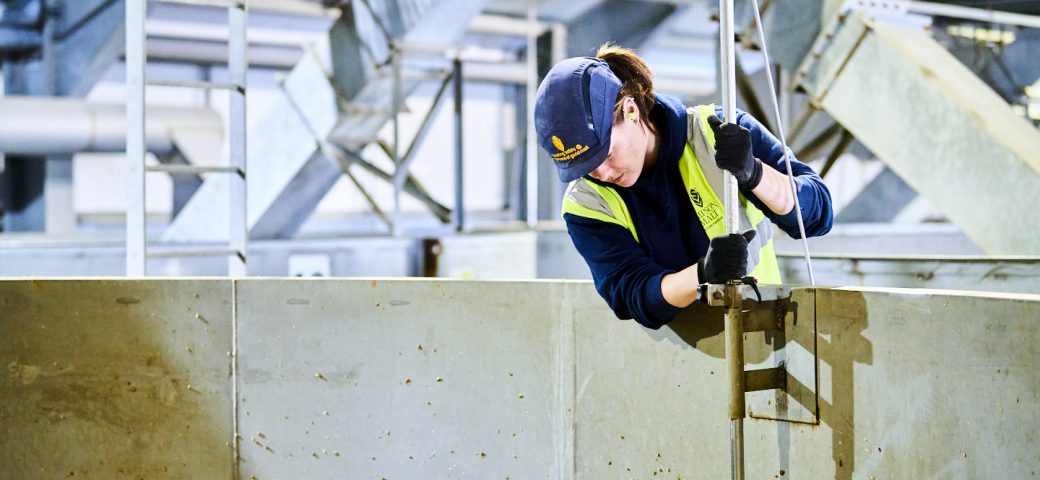
The ‘active’ malting process begins with the steeping phase.
Steeping involves soaking grain in large cylindroconical tanks in a series of ‘wets’ and air rests to ensure that the moisture content rises from around 12% to an optimal 45%.
This is the perfect level to begin the germination phase.
Our Tweed Valley Maltings is home to the Jubilee Steephouse. Opened in the late 1990s, it is home to no fewer than 24 large cylindroconical steeping vessels. They are 11 metres tall and five metres wide, each with the capacity to hold between 65 and 75 tonnes of barley.
Our Tivetshall St Margaret Maltings, meanwhile, has eight steeping vessels, each with capacity to hold 30 tonnes of barley.

What is the purpose of steeping?
The aim of steeping is to get every grain to reach the same moisture content at the same time to trigger the start of the germination phase. This step is very important as this is where we control the extent of the modification and homogeneity of the finished product.
The whole steeping phase takes 40-48 hours. The barley is loaded into the steeping vessel and the process begins with a ‘wet’ phase, where water – extracted from our own on-site boreholes – enters the tank and soaks the barley.
At points during the ‘wet’ phase, rousing takes place.
Rousing is when low pressure air lifts grain and water up the central pipe, which is then dispersed by the cap on the top of the pipe. This ensures that the barley is regularly moving around the steeping vessel, while it also introduces oxygen into the steep water.
The water is then drained and the barley spends many hours in an air rest. During the air rest, we evacuate the air within the steep through a small fan, preventing a build-up of CO2 within the vessel.
By this point, the barley has reached around 32% moisture, so the process is repeated to reach 45% – albeit with different timings the second time around, including a longer ‘wet’ phase.
After both ‘wet’ phases, the water drains out of each steeping vessel and is directed to our water treatment plant.

Attention to detail with each batch
It’s important to note that different cycles and durations of ‘wets’ and air rests can be implemented depending on the quality and variety of the barley. These settings are monitored by our experienced team of maltsters on a batch-by-batch basis.
“We can adjust our steeping process for each batch, including changing the temperature of the water by a few degrees. This prevents external ambient temperatures from interfering with the process.”
Mark Mitchell, Operations Manager, Tweed Valley Maltings
After 40-48 hours, the enzymes have been activated and ‘chits’ emerge from the embryo of each kernel.
The grains are now ready to be cast onto one of our germination and kilning vessels (GKVs) where, as you may have guessed, both the germination and kilning stages take place.
